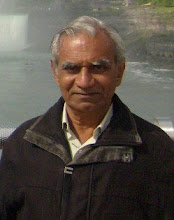ARYABHATA, THE GREAT
INDIAN MATHEMATICIAN AND ASTRONOMER
K. R.
KRISHNAMOORTHY
Have
you ever scrutinized the reverse of a two-rupee currency note? It has the picture of our first satellite, launched on 19th
April, 1975, launched by ISRO, India, from the land of Russia, to conduct experiments in X-ray astronomy,
aeronomics, and solar physics. The
satellite was given the name, ARYABHATA, in honour of the great Indian
Mathematician and Astronomer, whose life period is assumed to be 476 to 550 CE.
There is no fool-proof method to verify this, but in his work, Aryabhatiya, he has indicated that he
was 23 years old at 3600 years of Kaliyuga,
which corresponds to the year 499 CE. He was a native of Kusumpura, or
Pataliputra (present Patna) where he studied and later worked in the Nalanda
University. There is still a dispute as to his place of birth, some claiming it
to be Kerala, in a place called Kodungalloor. It is definitely pitiable that
there were no records about his birth and childhood.
Well,
let us see his achievements. He was the author of several treatises in Mathematics
and Astronomy, but most of them are lost forever. But, one of them survived –
the Aryabhatiya. This work by Aryabhata consisted of 108 verses, and dealt with
algebra, plane trigonometry, spherical trigonometry and simple geometry. He has
calculated sum of power series. He has constructed a table of ‘sines’ (perhaps
the ratio of the length of the opposite side of an angle to the hypotenuse in a
right angled triangle). There is, however, no mention of the other ratios like
cosine, tangent etc. He has also dealt with linear and quadratic equations.
His contemporaries,
Varahamihira and Bhaskara, have referred to Aryabhata’s second work, Aryasiddhantha. There, he has described
what caused the day and night, about Earth’s spherical shape and its revolution
around the sun. He has also given the
names of the seven days of the week. He used the alphabets to denote the
numerals. It is not known what he did to represent zero.
One of
his marvelous discoveries is the value of the ratio of the circumference of a
circle to its diameter (denoted by the Greek letter “Pi”). He said, “Add four
to hundred, multiply it by eight, and then add 62,000. This will give the length
of circumference of a circle of diameter 20000 units. Wonderful! This value works
up to 3.1416, correct to 4 decimal places. Today, the accepted value for this
ratio is 3.1415926…. He also said that this number is irrational, meaning
that it cannot be expressed as a normal fraction.
Another
notable discovery by Aryabhata is that eclipses are not caused by some demons
swallowing the Sun and the Moon, but are caused by the changes in the path of
revolution of the concerned planets. He also declared that rising and setting
of the various planets and stars are the result of the relative motion of the
earth in the solar system.
